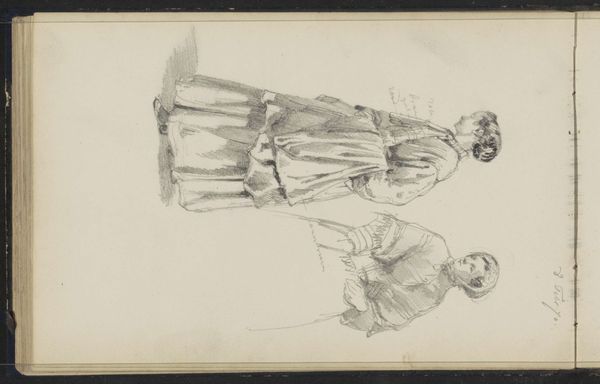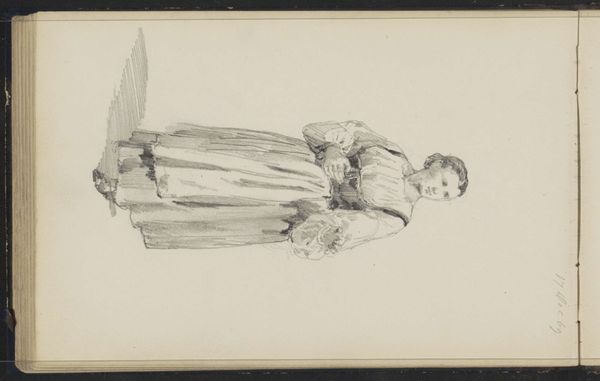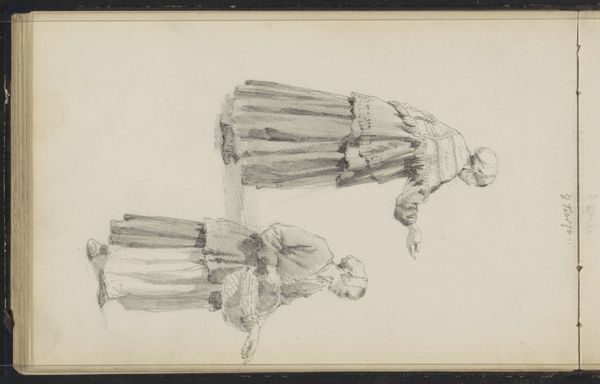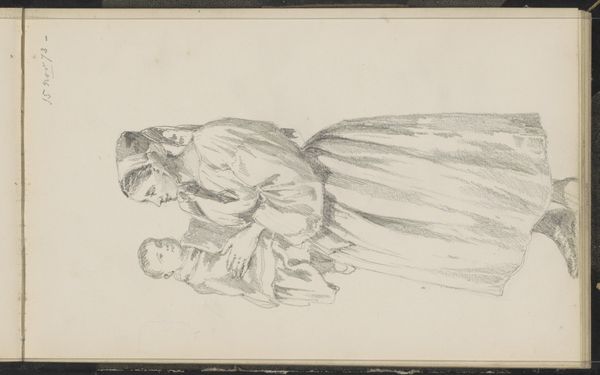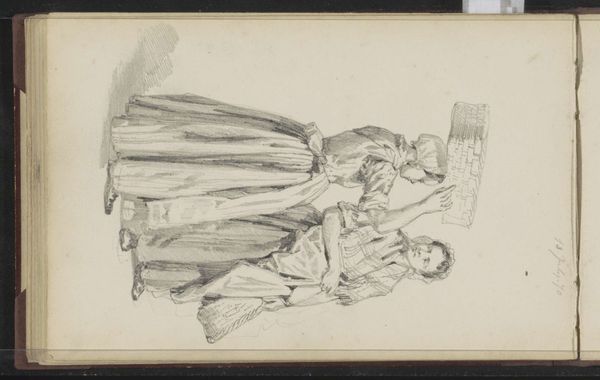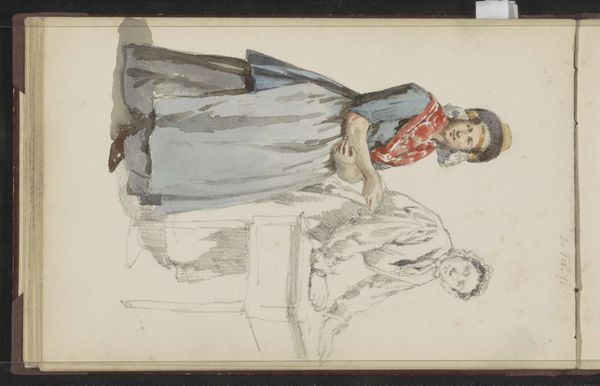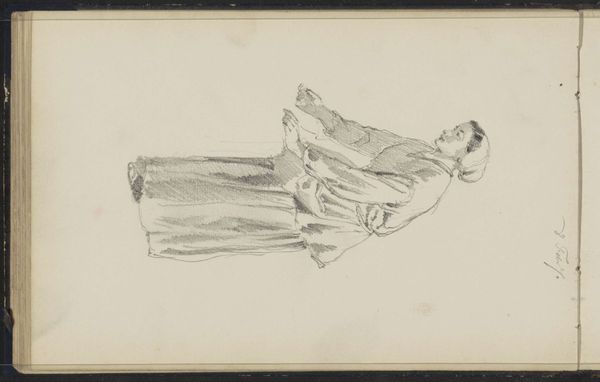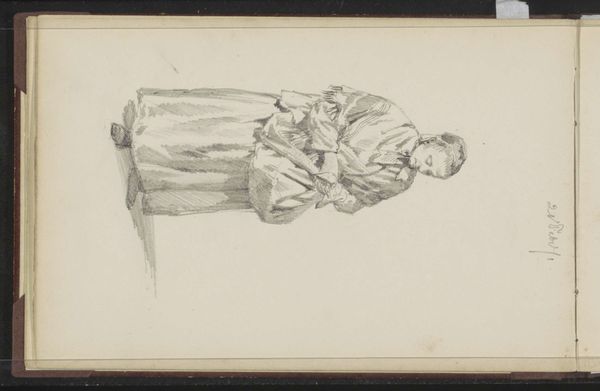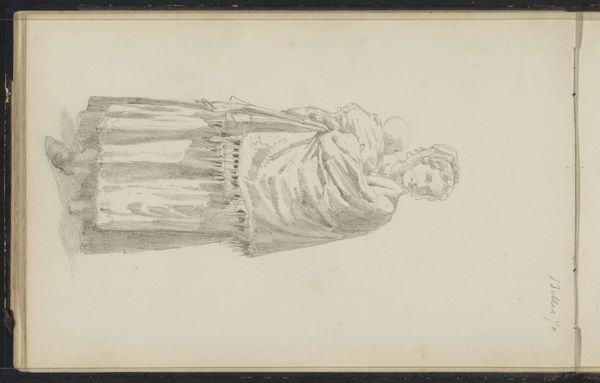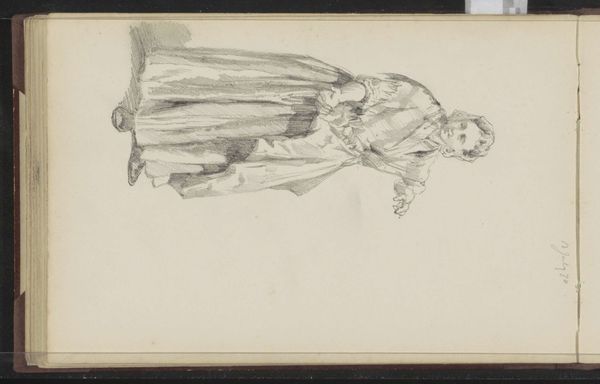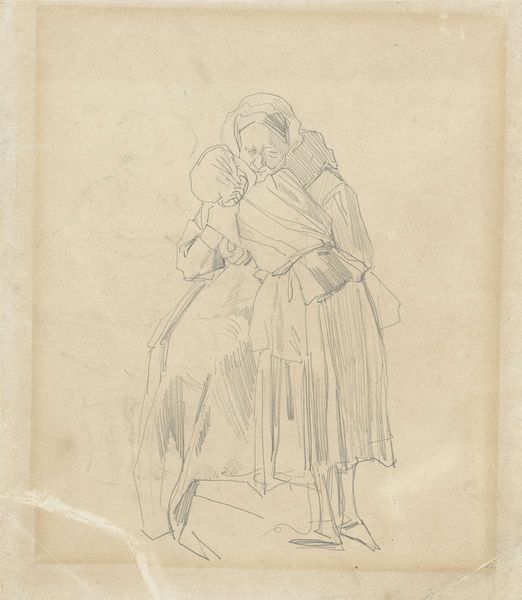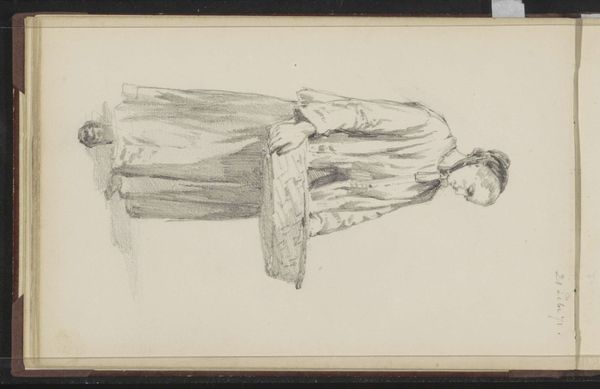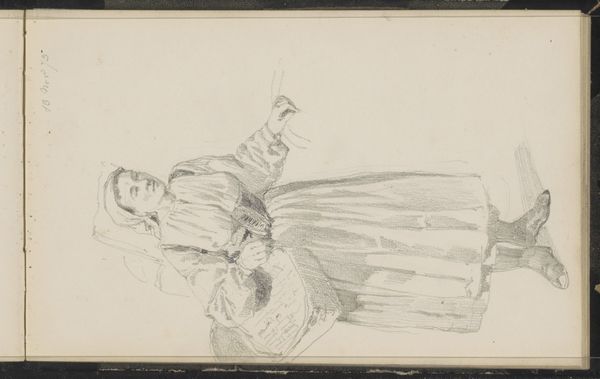
drawing, paper, pencil
#
portrait
#
drawing
#
figuration
#
paper
#
pencil
#
genre-painting
Copyright: Rijks Museum: Open Domain
Editor: This drawing by Cornelis Springer, titled "Two Women by a Stool or Table," dates from around 1870 to 1878. It's a simple pencil sketch on paper, yet there's something quite tender about the depiction of these women. What do you see in this piece, beyond the immediate representation? Curator: What I find compelling is how seemingly ordinary genre scenes like this can unlock broader socio-political readings. Springer presents these women in a domestic setting, presumably engaged in some kind of work or conversation. But let's consider the context: what did it *mean* for women to occupy public and private space during this period? What limitations, if any, were placed upon women workers, versus male counterparts, in similar roles? And how is it reinforced, in the seeming simplicity of this art? Editor: That's fascinating! I hadn't thought about it in terms of the restrictions placed upon them at the time, but I see your point. Were there artistic conventions in place that may have further affected Springer's choices? Curator: Absolutely. Genre paintings, especially those featuring women, often functioned as vehicles for moralizing messages or reinforcing societal expectations. What might this image be suggesting about women’s roles and status, perhaps through the details of their clothing or their relationship to the domestic space? Editor: Now that I'm paying closer attention, there seems to be almost no interaction at all between the two women. Was this done to possibly underline their isolation or restricted environment? Curator: That's very astute. We need to consider how these visual elements—composition, posture, the implied narrative—participate in the ongoing cultural construction of gender and identity. Do they conform to expectations, challenge, or subvert them? Are there also other dynamics that we can investigate, such as the women's age or apparent social status? Editor: This makes me consider how the art of the period played such a pivotal role. I now wonder, if this image served a purpose far beyond aesthetics or surface realism. Thanks, this has made me appreciate the layers hidden within such an ordinary drawing! Curator: Indeed, by examining art through the lens of social history and feminist theory, we unveil critical insights into the power dynamics that shaped our world.
Comments
No comments
Be the first to comment and join the conversation on the ultimate creative platform.
